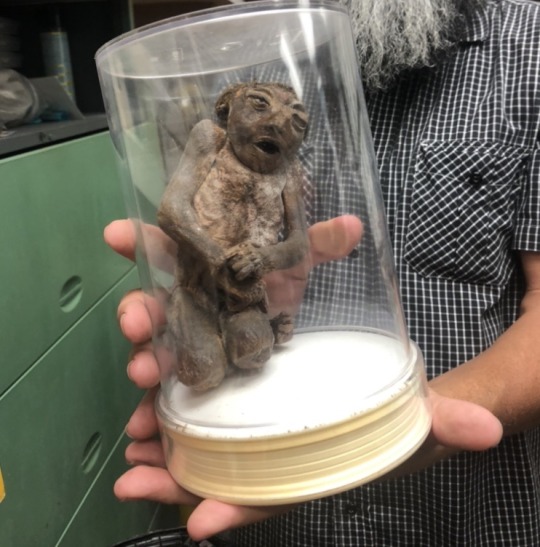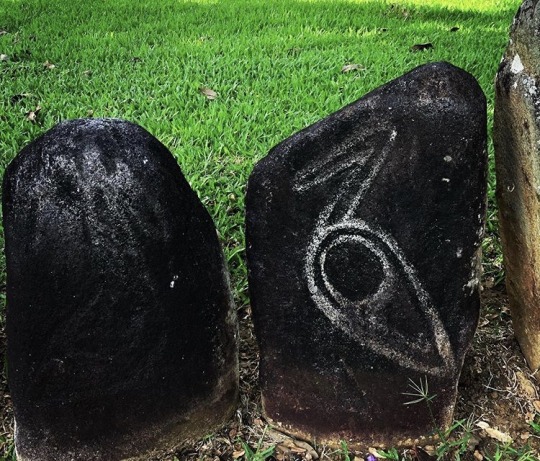#Michael Rostovtzeff
Explore tagged Tumblr posts
Text
Michael Rostovtzeff – Hellenistik Dünyanın Sosyal ve Ekonomik Tarihi (2024)
İskender’in Doğu’yu fethinin ortaya çıkardığı durum, daha yakın tarihte Amerika’nın keşfinden kaynaklanan durumla sık sık karşılaştırılır. Yani eskinin ekonomik kuruluşuna yeni bir dünya açıldığı söylenir. Bu kapsamlı ifade bir dereceye kadar yanıltıcıdır. Köklü bir uygarlık ve son derece gelişmiş bir ekonomik eylem dünyası olan Doğu’nun, en azından beşinci ve dördüncü yüzyıllar kadar erken bir…

View On WordPress
#2024#Hellenistik Dünyanın Sosyal ve Ekonomik Tarihi#Michael Rostovtzeff#Selenge Yayınları#Uzay Can Ardal
0 notes
Text
“For me archaeology is not a source of illustrations for written texts, but an independent source of historical information, with no less value and importance, sometimes more importance, that the written sources”.
-Michael I. Rostovtzeff





Here are some pictures from last semester when I took the Caribbean Archeology course. This has been one of my favorite classes by far.
#academia#dark academia#studyinspo#historyblr#historystudent#studyblr#historian#history#archaeology#archeologist#historia#puerto rico#caribe#caribbean#arqueologia#arqueologico#archeology#dark acadamia aesthetic#chaotic academia#academic#classes#studyspo
64 notes
·
View notes
Video
youtube
"The Accidental Suicide of the Roman Empire" by Michael Kulikowski
In modern culture and every generation makes its fall of Rome in its own image, early in the 20th century Germans like Otto Seeck and American like Tenny Frank put the fall of Rome down to race-mixing. After 1917 the exiled Russian aristocrat Michael Rostovtzeff argued that the recruitment of the rootless proletariat into the Roman army caused imperial collapse. The Nazis saw the fall of the Roman empire as historical evidence for German Lebensraum. After 1960s eco catastrophists had a brief moment, there was a period when lead poisoning was meant to have brought down the Roman empire.
0 notes
Text
Notes on: Y. Wang, ‘The Loouvre from China. A critical study of C. T. Loo and the Framing of Chinese Art in the United States. 1915 - 1950’, (MA Thesis, Ohio University, submitted 2007).
C.T. LOO (1880 - 1957) was a dealer /collector /scholar /curator
Loo played an important role in the shaping of Chinese Art collections in Europe and especially America
Between 1910 - 1950 he published +20 catalogues
He was in contact with prominent scholars
He was in contact with +15 American museums
He also had political ties with Sun Yat-Sen and the nationalist party [even after the act that prohibited antiques to be exported from China was enacted in 1913 Loo was able to deal in objects]
He was in contact with scholars like (see p. 115): Paul Pelliot (1878 - 1945) / Berthold Laufer (1874 - 1934) / Alfred Salmony (1890 - 1958) / Michael I. Rostovtzeff (1870 - 1952) / Bernhard Karlgren (1889 - 1978) / Jean-Pierre Dubosc (1903 -)
Loo catered to the taste of American entrepreneurs and industrialists including: John D. Rockefeller (1839 - 1937) / Charles Lang Freer (1854 - 1919)
0 notes